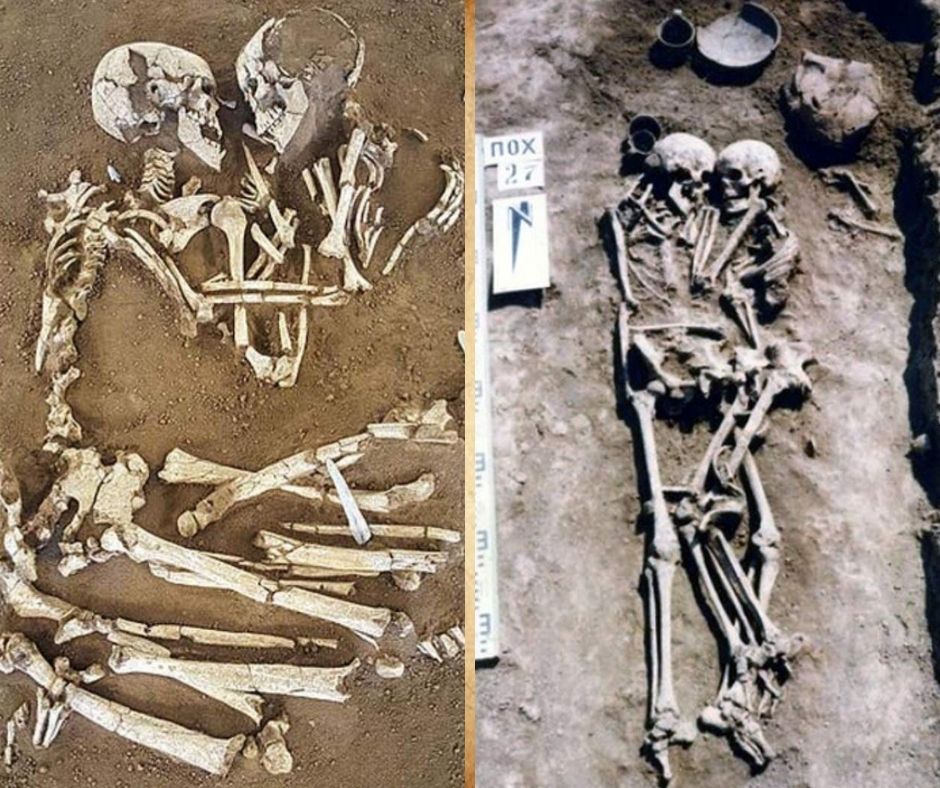Valdaro’s Lovers: Neolithic Embrace Endures

In the heart of Italy, near Mantua, a scene has been discovered that seems straight out of a romantic tragedy. Two human skeletons, known as the “Lovers of Valdaro,” were found embracing each other, gazing at each other as if they shared a bond that even death could not break. This archaeological discovery, which dates back approximately 6,000 years, continues to inspire generations with its emotional charge and mysterious symbolism.
In 2007, a team of archaeologists led by Elena Menotti discovered this unusual tomb during excavations in Valdaro, a town in northern Italy. The skeletons, belonging to a young man and a young woman, were perfectly preserved in a fetal position, facing each other with their arms intertwined. This is a unique discovery, as double burials of this type are rare in prehistoric contexts.
Osteological analysis revealed that both individuals were approximately 20 years old at the time of their deaths. Their skeletons show no obvious signs of violence, ruling out the theory of a tragic end like that of Shakespeare’s famous Romeo and Juliet. Instead, researchers believe they may have died simultaneously from illness or as part of a symbolic funeral ritual representing eternal union.
The couple lived during the Neolithic period, a time of great change for humanity. It was the time when humans transitioned from hunter-gatherers to cultivating agriculture and animal husbandry, establishing more permanent settlements. Although life during this period was marked by challenges such as disease, conflict, and food shortages, the Valdaro Lovers offer a moving glimpse into the emotional bonds that transcended even these difficulties.
Since their discovery, the Valdaro Lovers have captured the public’s imagination. Their embrace has been interpreted as a universal symbol of eternal love, a connection that transcends time and death. Today, their remains are preserved in a museum in Mantua, where thousands of visitors come to see this tangible proof of a deeply moving human bond.
The discovery of the Valdaro Lovers reminds us that, while the details of their lives remain a mystery, their remains open a window onto the oldest and most enduring human emotions. Their embrace is an eternal testament to compassion, intimacy, and love, values that have survived millennia and continue to define our humanity.
This “eternal embrace” is not only an archaeological treasure, but also a poetic reminder that love, in all its forms, can defy even the passage of time.

